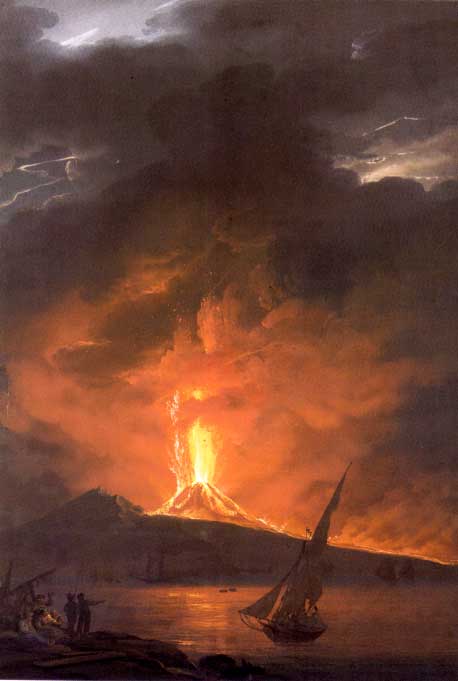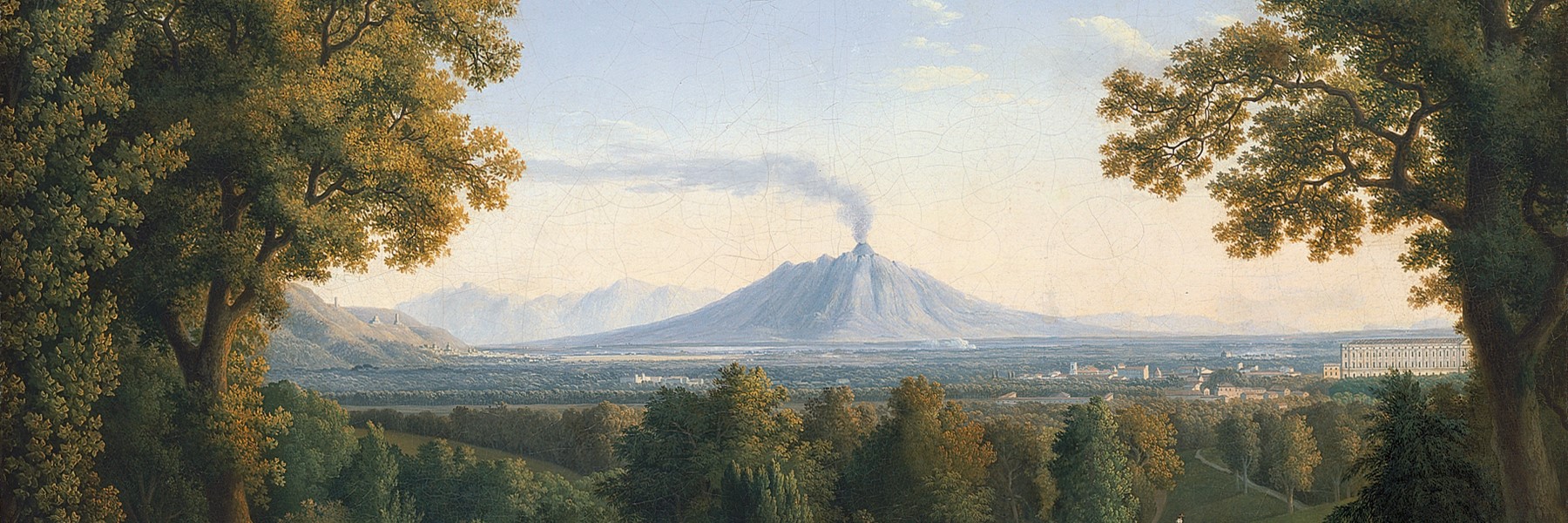... Here I am in the top of Vesuvius. I write sitting in his mouth and am ready to descend down the crater. The sun, now and then, bursting, across the veil of vapor that surrounds the mountain. These vapors hide me one of the most beautiful scenery on earth and serve to redouble the horror of the place. Vesuvius, the clouds separated by charming towns springs at its base, it seems so placed in the deepest desert; nor the spectacle of a flourishing city takes force MISUSE terrifying feeling.
FR de Chateaubriand - Journey to Italy (1803-1804)

Beyond its geophysical value, over the centuries Vesuvius has played a very important role in the history of art since (first century AD) was painted in fresco "shade of green vine leaves" to the more recent expressions of 'contemporary art.
Painters, watercolor painters and engravers of almost every age, trend and nationalities have variously interpreted; among them Italian, French, British, Germans, Austrians, Russians and Danes inspired by many different genres and art movements, called "quaint", "sublime", "heroic", "romantic", "catastrophic", "horrific", and even from ' "abstraction".
In particular, in 1631 the Vesuvius made its first appearance in the painting of the time as an absolute protagonist of the work of art, but also as a destroyer; It is the case of Didier canvas bar. However it not always had a leading role. Indeed, until the first half of '700 generally formed the backdrop to the Neapolitan landscape as an accessory item, while leaving room for the reaction of the people, who, terrified by an eruption in progress, invoked his patron saints.
Of the numerous artists of the '700 and' 800 that have portrayed the "smoking mountain" remember Bonavia, Volaire, Pietro Fabris, Hackert, Xavier della Gatta, Giacinto Gigante and Anthony Pitloo. Again, in the second half of the '700 Vesuvius it reviews the role of "dominates the landscape" in the compositions of the artists, being observed from different points along the Gulf of Naples, for example from Torre Annunziata and Porches.
In time, though, fin'oltre the second half of the 800, the representations of forgiveness Vesuvius any emotional value, reduced to mere repetition of the classic image of 'gulf with the smoking volcano in the background'. Some interesting variant is offered by the artist Johan Christian Dahl, Norwegian, Franz Ludwig Catel, German, and the sculptor Thorvaldsen. In 1819 Joseph William Turner and Camille Corot, 'playing' with the color contrasts, enrich the image of Vesuvius an extraordinary brightness.


